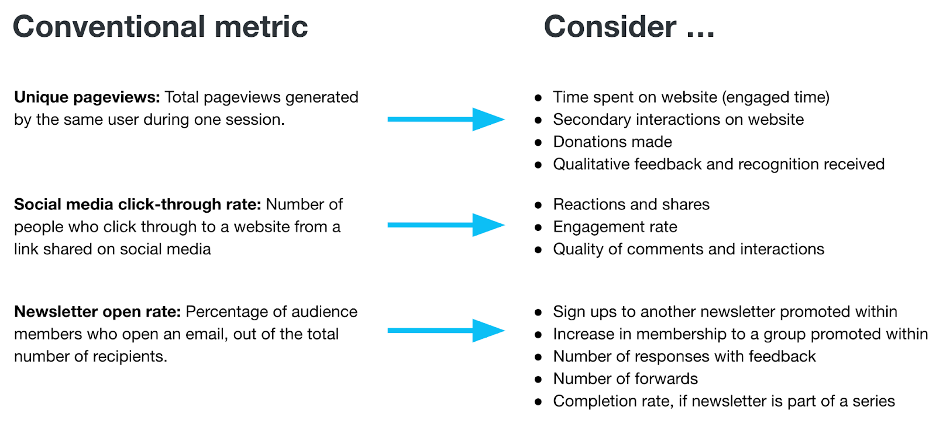Brand storytelling: who and what you need to get started
Here are three practical steps to building your brand storytelling operation.
Margaret Myers is a director on the editorial team at Long Dash. She is a former journalist who managed online coverage at PBS NewsHour and ESPN and led the features department at the Amarillo Globe-News. Karen Houston is a senior editor for Long Dash's newsroom projects. She manages publication operations for leading global professional services firms.
This is Part II of a three-part series on building a brand newsroom. In Part I, we showed brand leaders how to define a brand newsroom’s purpose and engage its audience. In Part II, we dive into operations, staffing, and metrics. And in our forthcoming Part III, we will address how brands should think about the timeliness and relevance of their content.
In Part I, we talk about the value of brand storytelling—how brands that invest in building relationships with their audience end up with a strong community of loyal fans.
Brand storytelling is an opportunity for every brand to provide value beyond its products and services. When a brand’s content adds something useful, entertaining, or educational to a person’s day, brands are building a lasting affinity with their audiences, not chasing the fleeting contact of traditional advertising. Brand storytelling transforms traditional marketing into a vibrant, engaging dialogue and helps build brand endurance.
In Part II of our series, we explore practically how to go about starting a brand storytelling operation, or what we call a brand newsroom. It begins with identifying the people and the process, and then measuring impact. To do that, here are three foundational questions brand leaders should ask that will help them build a brand newsroom.
- How do we infuse our brand’s expertise into the stories we tell?
One of the best ways to stand out with your content is to showcase and leverage the deep knowledge of your own subject matter experts (SMEs). They can be on staff or partners of your brand. By highlighting their insights and expertise, you can create content that not only connects and inspires people, but also builds trust with your audience. This approach to connection humanizes your brand while also turning it into a go-to resource in your industry, providing value that transcends basic promotional material.
Global B2B firms like EY and McKinsey are known for showcasing the expertise of their consultants in their publishing. But even brands like Bessemer Venture Partners that cater to a narrower audience (specifically founders and startup entrepreneurs), rely on their experts to build their brand’s credibility.
One key to sustaining a publication or any content operation that depends on contributors is investing in the relationships you have with these SMEs. After all, these field experts and leaders are the fuel of a contributor-model publication operation. Here are three things we keep in mind as editors to keep contributors happy and our publication pipelines full:
- Make it mutually beneficial: When reaching out to potential contributors, share why publishing on your platform will benefit them, for example, who are your readers? Let contributors know that you have the kind of audience members they’re also trying to reach with their work. What is the size of your audience? How many people can contributors expect to reach with their article or post? Sharing details like this helps contributors see how partnering with you will expand the audience for their work as well.
- Make it easy for them: Provide submission guidelines up front. This may be a two-pager that outlines in simple terms what editorial, storytelling, research, citation, and style elements must be present before submission. This will make for fewer surprises and allow the publication to keep moving through production.
- Also consider that not everyone has the skills or time to write an article in the style of your publication. When this is the case, offer to interview the expert, Q&A style. The best interviews happen over the phone or Zoom, as opposed to sending a list of questions for a written response. The result is a more conversational tone, which is easier for readers to consume, especially when covering complex subjects.
- Share the finished product and your appreciation: An easy-to-forget but important step! Close the loop by sharing the link to the published piece with the author. Encourage the author to share to their social channels and networks, and thank them for their time and expertise.
- How can we create a smooth review process so we can publish on time while ensuring quality?
Every brand story involves multiple stakeholders, from subject matter experts who help inform the ideas in each story, to members of the communications team who help ensure consistency in tone and messaging, to legal who do what they do.
Because so many people weigh in, roles must be crystal clear. At each step of the workflow, everyone needs to understand what they’re responsible for. We find this breakdown useful when it comes to the different roles:
- Driver: This person “owns” the piece of content and is responsible for advancing it from inquiry to distribution, following your brand’s style and standards. They are responsible for ensuring the appropriate people have weighed in and all the necessary changes are made. They handle escalating any major feedback to the Approver.
Driver example: The editor who assigned the story.
- Approver: This person is ultimately responsible for signing off on a piece of content. Often this person “breaks ties” when there’s competing feedback.
Approver example: The editor-in-chief of the brand newsroom.
- Consulted: Any stakeholder reflected in the piece or who has subject matter expertise relevant to the content. They are responsible for giving feedback relevant to their expertise and helping shape the story, if needed.
Consulted examples: SMEs who contributed to the story; and representatives from Legal, Research, Policy, Media, and Creative.
- Informed: Anyone who has an interest in the piece but who is not responsible for shaping it.
Informed examples: Social media team, copy editor, external sources quoted in the story for fact-checking purposes.
- How do we measure success?
Chasing pageviews and other vanity metrics can often provide a distorted view of true engagement. These numbers might look impressive at a glance, but they don’t necessarily translate to genuine interaction or value to your audience.
Instead, consider more meaningful metrics of success that will help you learn more about your audience’s behavior and align more closely with your audience goals and organizational goals at large.
For example, if your goal is to increase donations via your website, you may look at the paths users take to arrive at the donation page and how long they spend on your site.
If your goal is to boost social media engagement, you may look beyond how many click throughs you earn to how users engage with the content you are posting on social. Meaningful engagements like shares and thoughtful comments can be more indicative of how users interact with your social content than a simple click through.
If your goal is to make your newsletter a go-to source for your specific audience, you may look at how many people are forwarding your newsletter.

These three questions are only a starting point! As a brand begins to define its editorial mission and assemble its storytelling team, brand newsroom leaders must also address questions related to a brand’s role in the wider public discourse.
In Part III, we will address questions related to timeliness (when should I talk about something?) and relevance (should our brand even be talking about this at all?). In this era of heightened attention to social and political issues, it’s vital that brands navigate carefully, ensuring their content is always useful and resonant with their audiences.





